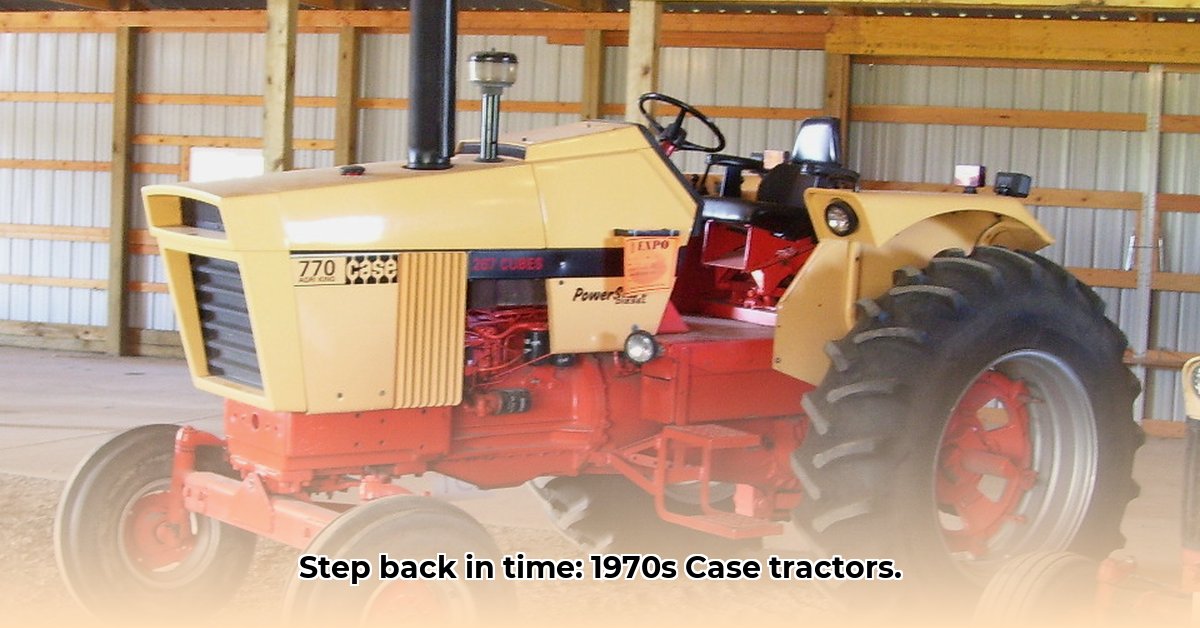
1970s Case Tractors: A Revolution in Agricultural Power
The 1970s marked a significant turning point for Case tractors, mirroring broader changes in agricultural practices. Farmers increasingly demanded machines offering enhanced power, efficiency, and ease of use. This period saw the rise of the diesel engine as the dominant power source, revolutionizing farm machinery. This wasn't simply a fuel switch; it represented a fundamental shift in tractor capabilities. How did Case tractors respond to this demand? Let's explore their remarkable journey. For more in-depth information on Case tractors, check out this helpful resource.
The Diesel Engine's Triumph: Power and Efficiency Redefined
The adoption of diesel engines in Case tractors during the 1970s significantly increased both power output and fuel efficiency. Unlike their gasoline counterparts, diesel engines provided greater torque (rotational force), crucial for demanding tasks like plowing tough fields or pulling heavy implements. This resulted in a substantial reduction in fuel consumption for equivalent work, a significant boon for farmers. Wouldn't you agree that increased efficiency and pulling power were highly desirable traits?
A Horsepower Surge: Case Tractors Lead the Charge
The 1970s witnessed a considerable increase in tractor horsepower. Models like the Case 1070 boasted well over 100 horsepower, a substantial improvement over previous generations. However, the focus extended beyond mere horsepower. Simultaneous advancements in transmission technology, notably the introduction of power-shift transmissions, allowed for quicker and smoother gear changes, enhancing productivity and operator comfort. Did the improvement in transmission technology overshadow the horsepower increase in terms of overall productivity? That’s a question worth exploring. Larger fuel tanks further contributed to extended operating times.
Beyond Horsepower: Unveiling Hidden Innovations
While horsepower figures are readily available, detailed information on other technological advancements remains scarce. Improvements in hydraulic systems (which power functions like lifting implements) and transmissions are documented, but specific details are often lacking. This data scarcity hinders a comprehensive understanding of Case’s engineering achievements during this decade. The available historical records tend to emphasize horsepower increases, sometimes overlooking other crucial advancements.
Case 1070: A Symbol of 1970s Innovation
The Case 1070 serves as an excellent example of the era's innovations. It successfully combined a powerful diesel engine with an optional, surprisingly comfortable operator cab. The improved transmission showcased the growing focus on user-friendliness. This marked a significant shift in design philosophy – tractors were no longer solely about brute strength; operator comfort and ease of use were becoming increasingly important. This trend reflects the overall mechanization of agriculture, demanding more sophisticated and user-friendly machinery.
This shift towards operator comfort is a testament to the evolving needs of the farming community.
The Broader Context: Factors Shaping Tractor Design
To fully grasp the significance of 1970s Case tractors, we must consider the broader context. The prevalent farming practices, economic climate, and any potential fuel crises or government regulations all played important roles in shaping design choices and production. These external factors profoundly influenced the development of agricultural machinery.
Uncovering the Unknown: Future Research Directions
Our exploration has illuminated some intriguing aspects of 1970s Case tractors, yet significant gaps remain. Further research is essential to complete the narrative. Accessing Case’s internal archives could unveil invaluable data on production numbers and specific technical specifications. Preserving this historical record benefits both tractor enthusiasts and those interested in the broader history of agricultural technology.
Three Pivotal Points:
- The transition to diesel engines significantly improved both the power and fuel efficiency of Case tractors.
- Advancements in transmission technology, like power-shift transmissions, enhanced productivity and operator comfort.
- The Case 1070 exemplifies the shift toward designing tractors that prioritized both power and operator experience.
How to Compare Case Tractor Models: A detailed comparative analysis requires a systematic approach, focusing on key specifications such as horsepower, engine type, transmission type, three-point hitch capacity, and hydraulic system capabilities. Remember to consider the historical context, including technological advancements and the intended use of each model, for a truly comprehensive comparison.